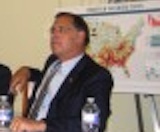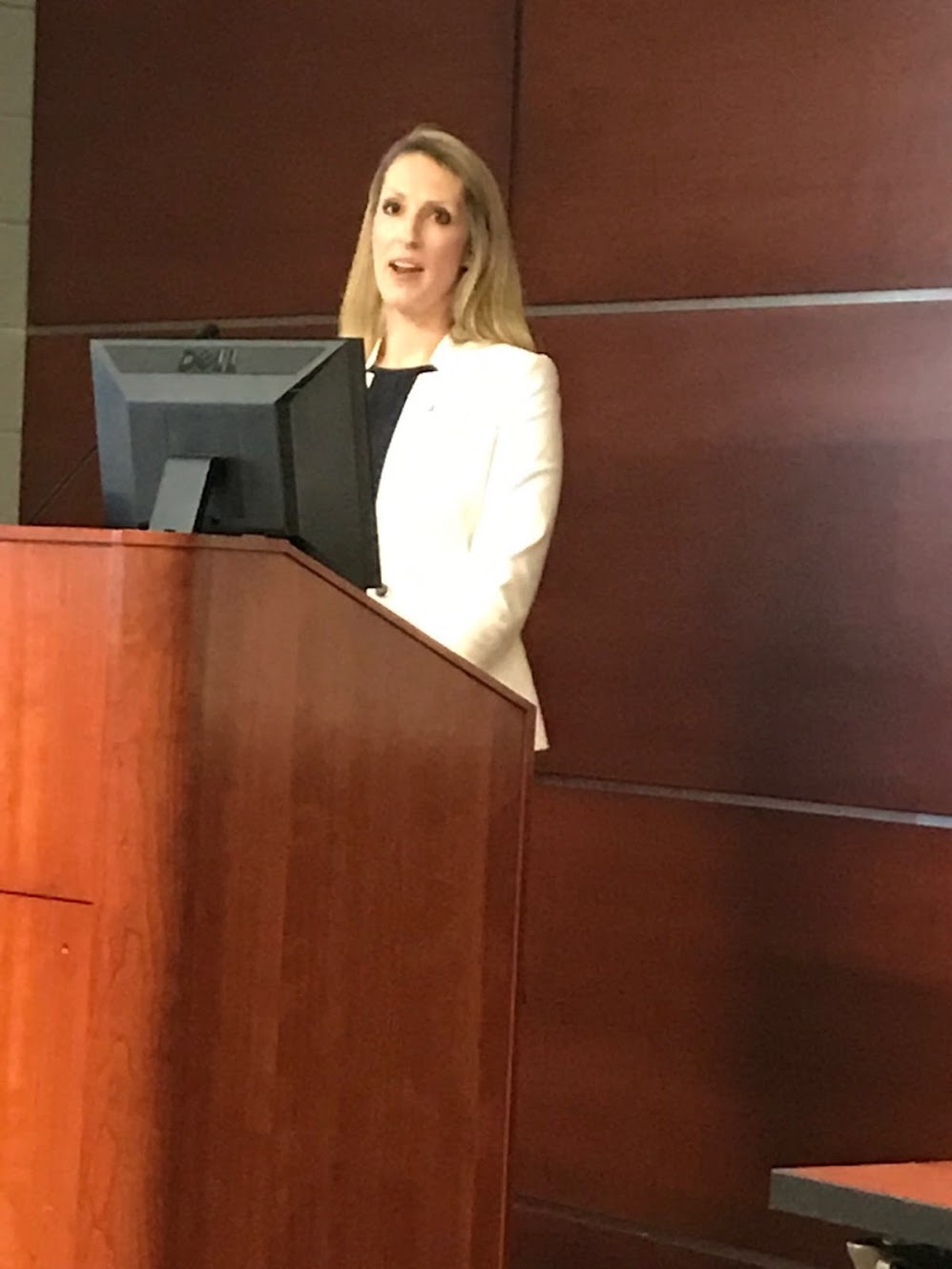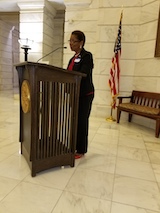Economic Equality Caucus
which advocates for economic equality across the USA.
| Home | Organizational Structure | State Coordinators | Executive Director | Caucus Articles | Memberships | |||||
| "Delta Vision, Delta Voices" | ||||||||||
|
Help Advocate for Economic Progress and Equality. Donate to the Delta Caucus/Economic Equality Caucus. |
||||||||||
Delta Grassroots Caucus Events

Credit Michael Hibblen/ KUAR News, Arkansas Public Radio; Former President Bill Clinton speaking to the Delta Grassroots Caucus on May 2, 2013, at the University of Arkansas Clinton School of Public Service, Little Rock

U. S. Senator John Boozman, Arkansas, at a Delta Grassroots Caucus meeting at the US Capitol

Brad Cole, Executive Director of the Municipal League of Illinois; previously a senior aide to former Republican US Sen. Mark Kirk of Illinois, earlier Mayor of Carbondale, Illinois, veteran Delta regional advocate, speaking at the Delta regional conference in West Memphis, Arkansas on April 26, 2019.

President Bill Clinton makes a comment to Delta Caucus Director Lee Powell at a meeting in Blytheville, Arkansas (in the northeast Arkansas Delta) on Nov. 2, 2014

The Delta Caucus would like to pay tribute to the late, great U.S. Sen. Thad Cochran of Mississippi, a powerful force in the US Senate for decades and a champion for the Delta. Sen. Cochran passed away on May 30, 2019. He spoke to the Delta Caucus on many occasions over the years (he is pictured above speaking to a Caucus event on Capitol Hill in Washington, DC) and his thoughtful, courteous and bipartisan leadership will be sorely missed.

Marcie Lawson, Executive Director, Sikeston, Missouri Regional Chamber and Area Economic Development Corporation, speaking at the Delta regional conference in West Memphis, Arkansas on April 26, 2019.

Alan Gumbel, Greater Memphis Alliance for a Competitive Workforce, Memphis, Tennessee, speaking at the Delta regional conference in West Memphis, Arkansas on April 26, 2019.

Mayor Shirley Washington of Pine Bluff, AR, speaking to the Delta Caucus at the Arkansas Capitol Rotunda in 2017.
Facts on SNAP, Nutrition & Key Farm Bill Issues, December, 2013
Posted on December 10, 2013 at 05:25 PM
TABLE OF CONTENTS FOR THIS POSTING:
I. Issue of proposed massive cuts to SNAP in the farm bill
II. Agriculture and nutrition programs were traditionally in the farm bill and this created a beneficial rural-urban alliance that has always helped both programs
III. See Housing Assistance Council website at www.ruralhome.org for information on housing issues in farm bill and other legislation; and HAC’s informative map of poverty in the USA demonstrates why key issues like farm bill funding make a huge difference for the regional and national economy
IV. Information from the National Rural Housing Coalition regarding definition of rural communities who are eligible for USDA Rural Housing programs
V. Bipartisan support for Delta Regional Authority authorization and appropriations.
I. Issue of proposed massive cuts to SNAP:
The House supports huge cuts of $39 billion over 10 years in SNAP (Supplemental Nutrition Assistance Program), while the Senate cuts are only about one tenth as large at $4.5 billion. The House wants to split the nutrition and agriculture parts of the farm bill, while the Senate does not.
This situation is an unprecedented departure of the historic bipartisan support for anti-hunger programs that has prevailed in America for 50 years, until now. The farm bill has expired and seriously needs to be renewed. It will inflict massive damage on the regional as well as the national economy if Congress fails to renew the farm bill.
Support for SNAP is NOT partisan: Over the decades, supporters of the expanded safety net that began in the 1960s has received strong bipartisan support from President John F. Kennedy, President Lyndon Johnson, President Richard Nixon, Sen. Bob Dole, President Bill Clinton, and President George W. Bush.
Today, the Senate, House Democrats and some House Republicans are supportive of SNAP. It is a fact that massive cuts in SNAP of almost $40 billion would be a historic departure from the consensus that has held for a half century that in America we don’t allow people to go hungry.
Delta has the worst nutrition levels in America: SNAP and other nutrition programs are profoundly important for the Delta, which according to USDA data has the worst food insecurity in America: Arkansas has the worst severe food insecurity at 8.1% and the second worst overall food insecurity at 19.7%. Mississippi had the worst overall food insecurity at 20.9%. Missouri, Louisiana, Tennessee, Kentucky, and Alabama joined Arkansas and Mississippi with 7 out of the 11 worst food security levels in America.
SNAP is efficient and fraud and abuse in the program is slightly over 1%–far lower than most government programs: When President Clinton came into office in 1993, SNAP trafficking was 4%, and he directed USDA to do much better. President Bush continued those efforts, as did President Obama. The program traditionally had bipartisan support and a little over 1% is a level much more efficient than the great majority of large-scale programs.
High SNAP spending is caused by high unemployment and low wages, and NOT laziness. At least one in seven of all Americans, and at least one in five of all children, lived in homes that directly faced or lived at the brink of hunger, and 68% of these families had at least one employed family member. In the Delta these figures are much higher, as noted above.
68% of families with children suffering from food insecurity had at least one employed family member. The plurality of hungry families are white people, although many minorities are suffering as well.
Another 10% had at least one adult working part-time. 7% had an adult actively looking for work. 7% were headed by an adult with a disability.
Conservative estimates are that the number of children receiving SNAP is about 40%; the nonprofit Food Research and Action Center calculates the number is even higher and that nearly half of SNAP enrollees are children.
92% of SNAP recipients do NOT receive welfare, and only 8% do.
SNAP benefits are tiny-approximately an average of $4.50 a day, and do not provide any incentive to stay on the program to avoid work. These benefits are so small that no one would have any incentive to avoid work to receive such a tiny amount. Our grassroots leaders all over the region constantly report that the vast majority of SNAP recipients are not lazy deadbeats but would love to have a decently paying job.
Would you avoid getting a job to get $4.50 a day for food?
The way to cut SNAP spending is to create decent-paying jobs: SNAP spending is so high because the economy has been so weak for five years now and NOT due to any federal effort to increase SNAP spending: Unemployment is over 7% nationally and far worse than that in many areas of the Delta, and this has lasted for over five years. Yes, let’s cut SNAP spending, but the only way to do so is through job creation.
SNAP’s economic stimulus benefit: (although its main purpose is to prevent hunger, of course):
According to the nonpartisan Moody’s Analytics, every dollar spent on SNAP increases Gross Domestic Product by from $1.73 to $1.79.
SNAP creates jobs: An increase of $1 billion in SNAP generates 17,900 jobs, according to the Joint Congressional Economic Committee. SNAP generates large-scale food purchases to major food outlets.
SNAP cuts will make diabetes problems even worse and increase diabetes costs by $10 billion-a classic case of penny-wise and pound-foolish: The nonpartisan Robert Wood Johnson Foundation and Pew Charitable Trusts estimate that $40 billion in SNAP cuts will increase medical costs for diabetes by $15 billion over the next 10 years. The Delta already has a severe diabetes dilemma and we cannot afford to make it worse.
Impoverished people can be overweight from eating cheap, fatty foods, while also having a few days each month when their money runs out and they are hungry: Low-income families have difficulty affording the most nutritious foods and low-income neighborhoods are often “food deserts” that lack healthy food choices. SNAP’s education program is useful in informing people about stretching their dollars to buy the largest possible amount of nutritious food.
On Nov. 1 the ARRA (stimulus) SNAP benefit boost expired, leading to SNAP cuts averaging about $25 for a family of three. These cuts are in addition to any cuts made in the context of the farm bill debate.
Food Research and Action Center President Jim Weill joined representatives of anti-hunger programs across the country* to discuss the proposed billions in cuts to SNAP Congress is considering, and the skyrocketing number of requests for assistance that food banks across the country are experiencing as the holiday season approaches in the wake of the November 1 cut in benefits.
Weill said “”anti-hunger activists around the country, particularly in the southern states, need to talk to their members of Congress more, even if it seems like a daunting task.”
II. Agriculture and nutrition programs were traditionally in the farm bill and this created a beneficial rural-urban alliance that has always helped both programs.
Agriculture is still very important to the Delta economy, and while reforms to make sure that farm subsidies do not go to those who are very wealthy and do not need them are constructive, we want to maintain the urban-rural alliance and support both programs.
Gridlock in Washington over the farm bill leaves farmers in limbo at a time when they need to make planting decisions for next year: Lenders and farmers are delaying decisions normally made at this time of year about next year’s crop because of uncertainties over crop insurance, price supports, direct payments, payment eligibility and other issues.
House and Senate conferees are discussing ways to resolve the differences between the bills passed by each body. The current five-year farm bill passed in 2008 expired on Sept. 30 after a one-year extension.
Please convey information to your Members of Congress: There is a range of opinion on these issues, but please take part in the democratic process and convey your views to Members of Congress in our eight-state region. Key Members of Congress on the farm bill include Sen. John Boozman (R-AR), Rep. Rick Crawford (R-AR), Rep. Martha Roby (R-AL), Sen. Mark Pryor (D-AR), Sen. Thad Cochran (R-MS), Sen. Mary Landrieu (D-LA), Rep. Bennie Thompson (D-MS) and others in our region from southern Illinois and Missouri to Louisiana and east to the Alabama Black Belt.
Nationally respected public opinion survey organizationa like Hart Research Associates report 70% or more support for SNAP, including support across racial ethnic, party and gender lines: 70% or more Americans consistently state that cutting food aid is the wrong way to reduce government spending.
Effectiveness of SNAP and other nutrition programs in ending starvation and greatly reducing hunger and malnutrition in the USA: In the 1950s and early ’60s there was widespread hunger and actual starvation in the Delta. President Kennedy doubled the number of foods on the commodity surplus list and started the pilot Food Stamp program in 1961. Succeeding administrations and leaders of both parties such as Sen. Robert Dole (R-Kansas) and many others greatly expanded food stamps and other nutrition programs in the ’60s and ’70s.
Dramatic reductions in hunger due to SNAP & other nutrition program: After this bipartisan expansion of nutrition programs, the nonpartisan Field Foundation that had reported alarming levels of hunger in the Delta and other regions in the ’60s concluded in 1979 that dramatic reductions in hunger and malnutrition were NOT due to an improvement in living standards or increased employment; rather, “The Food Stamp Progam, the nutritional components of Head Start, school lunch and breakfast programs, and WIC {Supplemental Assistance to Women, Infants and Children} have made the difference.” (Field Foundation report, 1979)
If these programs suffer massive cuts, especially SNAP that is the largest of them all, history shows that there will be hunger in some regions of America like the Delta that will again see severe hunger similar to those in Third World countries. The food banks and many nonprofits working in this field do a great job, but they cannot make up for massive losses in the major USDA nutrition programs like SNAP.
III. Please Visit the Housing Assistance Council website at www.ruralhome.org for information on USDA Rural Development housing programs in the farm bill and other legislation;
–Praise for HAC’s Informative Map of Poverty in the USA
USDA Rural Development programs in housing, rural small business, broadband expansion and other infrastructure, renewable energy and other key issues are vital, and these projects deserve strong funding in the farm bill as well.
We would like to encourage all our partners to visit the highly informative website of the Housing Assistance Council (HAC) at www.ruralhome.org. We have benefited greatly over the years from HAC’s research and data, their excellent speakers at our major events, and in particular their excellent map of poverty in the United States.
HAC Poverty Map in the USA Demonstrates that Decisions Such as Those in the Farm Bill Have Made a Difference Regarding Poverty in the Delta and Across the Country:
The outcome of the debate on the farm bill makes a huge difference regarding economic progress in our region, so please participate in the democratic process and make your voices heard.
At the Delta Caucus regional conference in May, 2013, we placed the HAC map on poverty in the USA on the big video screen at the Clinton Presidential Center throughout the conference. President Bill Clinton was there for over an hour in speaking to our group, as were Gov. Mike Beebe, five Members of Congress, and the leading candidates in the hotly contested gubernatorial race in Arkansas and grassroots leaders from all eight states. There were frequent references by the speakers to the map, which poignantly illustrates that the Greater Delta Region and the Alabama Black Belt (which we also cover) are unfortunately among the worst regions of poverty in the USA.
When people ask “Why should there be a special effort to address poverty in the Delta?”, the HAC map answers that question in the quickest and most effective way possible. The darker colors signifiying higher rates of poverty jump out from the map that the Greater Delta, Appalachia and the Southwest Border suffer from the largest areas of poverty across the nation.
The HAC graph of persistent poverty, 1990-2010, also immediately emphasizes Appalachia, the Greater Delta, the Southwest Border, and the part of Alaska covered by the Denali Commission as containing an alarmingly high percentage of the nation’s counties with 20% poverty or more. We have a strong feeling of solidarity with these other economically distressed regions and work with them regularly on common areas of interest in promoting economic progress there.
Reduction of poverty in the USA from 1960 to 2010: Another telling part of the map is the graph regarding poverty in the US, 1960 to 2010. The graph demonstrates that poverty as of 1960 was much higher–about 22%–than it later became beginning in the mid-1960s and continuing through all the decades to 2010.
While the poverty rate fluctuated somewhat over those decades, to 11 or 12% in more prosperous times and unavoidably having an increase in such times as the great recession from 2008 to 2010, nonetheless the national rate even toward the higher end was approximately 17%, substantially lower than the level as of 1960 of approximately 22%.
We cite the HAC graph to answer criticisms from those who are dismissive of efforts to reduce poverty and hunger in the United States. There was a major increase in the anti-poverty safety net in the 1960s, and although some of those beneficial programs fared better than others in funding over the years, the fact is that poverty was reduced substantially as a result and those gains were permanent.
Yes, we still have far too many areas of poverty in the Delta today, but nationally and in our region we have made substantial progress as compared to the 1950s. It is absolutely essential to convey that reality, because otherwise our partners would become demoralized if they thought the nay-sayers were correct that all our efforts meant nothing. The HAC poverty graph conveys the truth that we have made real progress in a striking and quickly recognizable way.
Whether the farm bill cuts funding for Rural Development, SNAP, aid to family farmers MAKES A HUGE DIFFERENCE. Please participate in the democratic process and convey your views to your Members of Congress.
Background on the Housing Assistance Council:
A nonprofit corporation headquartered in Washington, D.C., the Housing Assistance Council (HAC) has been helping local organizations build affordable homes in rural America since 1971. HAC emphasizes local solutions, empowerment of the poor, reduced dependence, and self-help strategies. HAC assists in the development of both single- and multi-family homes and promotes homeownership for working low-income rural families through a self-help, “sweat equity” construction method.
The Housing Assistance Council offers services to public, nonprofit, and private organizations throughout the rural United States. HAC also maintains a special focus on high-need groups and regions: Indian country, the Mississippi Delta, farmworkers, the Southwest border colonias, and Appalachia.
IV. Information from the National Rural Housing Coalition regarding definition of rural communities who are eligible for USDA Rural Housing programs:
(Editor’s note from the Delta Caucus: The following is a statement from the National Rural Housing Coalition for your information and consideration. Many people have different opinions on how “rural” should be defined. Many of our partners would emphasize a formula with a strong component weighted in favor of communities with the highest poverty levels that will avoid excluding areas strictly based on population counts. We welcome feedback from various points of view on this difficult issue.)
STATEMENT FROM NATIONAL RURAL HOUSING COALITION:
Unless Congress acts, 923 rural communities will no longer be eligible for critical Department of Agriculture (USDA) Rural Housing programs and will be cut off from what is often their only source of federal housing funding.
Preserving Access to Rural Housing Programs
Defining “Rural”
By January 15, 2014, USDA will revise its definition of “rural” under Section 520 of the Housing Act of 1949 with data from the 2010 Census. As a result, 923 communities will lose their eligibility for USDA Rural Housing programs:
To be eligible, rural communities must have a population that is: (1) less than 10,000; or (2) less than 20,000 if not located in a Metropolitan Statistical Area (MSA).
- Because fully half of the entire rural population lives in a MSA, this definition will arbitrarily exclude hundreds of communities that are - by any measure - still rural, but which happen to be located in metro areas.
The population limit is far too restrictive, limiting flexibility and choice.
Many rural families want to live in growing communities where they can better access public transportation, health services, water and sewer systems, and other community services.
Preserving Access To Rural Housing Programs: NRHC supports a long-term solution that maintains eligibility for rural communities for at least 10 years and increases the population threshold to 35,000.
ï¶ There is strong precedent for preserving current law; over the past several decades, Congress has acted to ensure that all rural communities - regardless of whether the community is located in a metro county - remained eligible for USDA Rural Housing assistance.
ï¶ Extending current law has no impact on the federal deficit. These bills only guarantee eligibility for Rural Housing programs, not funding.
Current legislation includes:
The Senate Farm Bill (Section 6202) would extend current law through the 2020 Census and increase the population limit to 35,000.
H.R. 858 was introduced by Rep. Fortenberry (R-NE) and would extend current law through the 2020 Census. This bill has over 60 cosponsors, evenly divided among Democrats and Republicans. Last year, over 100 Representatives signed Rep. Fortenberry’s letter, urging House Leadership to address the issue immediately.
S. 766 would extend current law through the 2020 Census and increase the population limit to 35,000. It was introduced by Sen. Johnson (D-SD), Crapo (R-ID), Johanns (R-NE), Moran (R-KS), Roberts (KS), and Tester (D-MT).
The House and Senate FY14 Agriculture Appropriations Bills would extend current law through the end of the fiscal year (September 30, 2014).
ï¶ Industry leaders including the National Association of Home Builders, National Association of Realtors, and Mortgage Bankers Association have come out in strong support of a legislative fix.
Learn more about how the “rural” definition will impact your community:
The National Rural Housing Coalition is national member organization of community groups, public officials, and non-profit developers who believe that rural people have the right, regardless of income, to decent, affordable housing, clean drinking water, and basic community services.
1331 G Street, N.W., 10th Floor, Washington, DC 20005 ï‚· (202)393-5229 ï‚· fax (202)393-3034 ï‚· http://ruralhousingcoalition.org.
V. Bipartisan support for Delta Regional Authority authorization and appropriations:
The DRA has a very small budget, but they stretch their dollars a long way and conduct many beneficial activities in job creation/retention, job training, health care, nutrition, transportation and other infrastructure, renewable energy, strategic planning, and a wide range of other issues for the eight-state region. The agency has strong and well-deserved bipartisan support.
The authorization for the DRA is in the farm bill, and forces in the House are attempting to reduce the authorization from the original $30 mil. when President Bill Clinton signed the bill into law in 2000 with bipartisan support in Congress down to $12 mil. The appropriations in recent years have been about $11.5 mil. through energy and water bill and $3 mil. through USDA Rural Development.
The vast majority of our partners across the eight-state region believe that investments in the DRA are a wise contribution to a brighter future for our region. In such a huge region there will always be a wide range of opinion. Please take part in the democratic process and convey your views to your Members of Congress.
Sources from Capitol Hill indicate to the Delta Caucus that the Farm Bill is most likely going to be authorized for the DRA around $12 mil. for each year FY14-FY18. We will know the actual authorizing number after conference.
The DRA has actually been seriously underfunded throughout its history, and the authorization and appropriation figures should go up over time rather than being decreased. The DRA funding reached its low during the early Bush administration in 2003-2004 in the range of $4 to $5 mil. and it has substantially increased since then, and we appreciate supporters in Congress and the executive branch who supported those results, but their budget nonetheless should be far higher than it is-at least the $30 mil. as originally envisaged when President Clinton signed the DRA bill into law as a first step.
For context and comparison, the similar Appalachian Regional Commission has traditionally received from the energy and water source of funding in the range of approximately $70 mil. or more, plus a much larger annual funding source for the Appalachian regional highway system.
Long-term goal of equity, fairness and objective criteria for funding among the major economically distressed regions: We support our ARC colleagues, but at some point there needs to be more equity in funding for the regional commissions in economically distressed areas like Appalachia, the Delta, the Southwest Border, the Denali area of Alaska. Again, we are completely supportive of the ARC and are glad for their funding success, and we share a strong commitment to regional strategies for economic development with our Appalachian colleagues. When the economy and budget deficit situations improve, many of our partners recommend a national policy of fairness and equity among the regions based on objective criteria like need, size, population, poverty levels and other objective standards.
Some key facts about the DRA (we would like to thank Senator Mark Pryor of Arkansas’ office for sending this data over to us):
The Delta Regional Authority (DRA) is a federal-state partnership established by the Delta Regional Authority Act of 2000 (Public Law 106-554) that serves a 252-county/parish area in an eight-state region near the mouth of the Mississippi River. Led by a federal co-chair and the governors of each participating state, the DRA is designed to remedy severe and chronic economic distress by stimulating economic development and fostering partnerships that will have a positive impact on the region’s economy.
The DRA seeks to help local communities leverage other federal and state programs, which are focused on basic infrastructure development, transportation improvements, business development, and job training services. Under federal law, at least 75 percent of appropriated funds must be invested in distressed counties and parishes, with 50 percent of the funds provided for transportation and basic infrastructure improvements.
For fiscal year 2014, the Committee recommends $11.319 mil., which is $358,000 below fiscal year 2013 and the same as the budget request.
USDA DRA Funding:
Rural Business Program Account
The Rural Business Program, administered by RBS, supports business development, training, and retention. Funding for the loan program is allocated to state rural development offices by formula where state directors set priorities particular to their state’s rural needs. The account includes four budget lines: Rural Business Enterprise Grants, Rural Business Opportunity Grants, the Delta Regional Authority, and the Business and Industry Guaranteed loan program. Appropriations for FY2011 provided $85.3 mil. in budget authority for the Rural Business Program Account, down from $97.1 mil. in FY2010. The FY2012 appropriation provided $74.8 mil. in budget authority for the four budget lines.
Delta Regional Authority: The Delta Regional Authority (DRA) is a state-federal development authority providing economic assistance to 252 economically distressed counties and parishes in eight southern states-Alabama, Arkansas, {southern} Illinois, Kentucky, Louisiana, Mississippi, {southeastern} Missouri, and Tennessee. The DRA makes loans and grants for a variety of community projects supporting housing, business development, community facilities, and employment training.
Statutory Authority: Subtitle F, Consolidated Appropriations Act of 2001 (P.L. 108-447; 7 U.S.C. 1921, et seq.).
Financing: Competitive grants.
Eligibility Criteria: At least 75% of DRA funds must be invested in economically distressed counties and parishes. Approximately half of the funds are earmarked for transportation and basic infrastructure improvement.
Funding: FY2005: $1 mil.; FY2006: $2 mil.: FY2007: $2 mil.; FY2008: $3 mil.; FY2009: $2.9 mil.; FY2010: $2.9 mil.; FY2011: $3 mil.; FY2012: $2.9 mil. This appropriation does not include funding for the Delta Region Transportation Development program authorized by P.L. 109-59. The Delta Regional Authority also receives funding under Independent Agency appropriations.
Back to the top